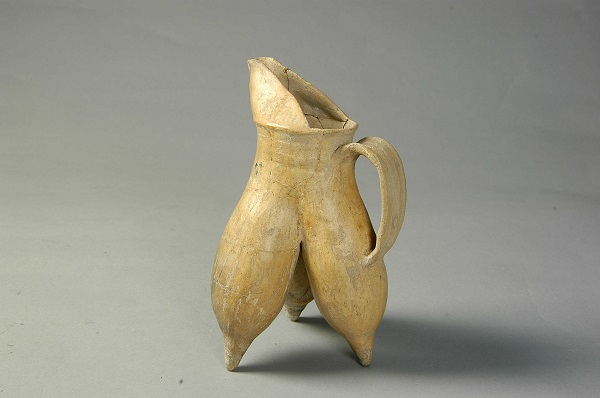Date: Longshan culture (5000-4000 years ago), Neolithic Age
Provenance: Unearthed in Xiaozhitian village, Gongyi, Henan province
Measurements: Height: 22.5 cm
The vessel dates back 4,000 to 5,000 years. The pottery gui vessel, used for heating water or warming liquor, was first discovered during the Dawenkou culture period and prevailed in the Shandong region of the middle and lower reaches of the Yellow River as well as the areas in the middle and lower reaches of the Yangtze River during the Longshan culture period. This tripod, pitcher-like white pottery vessel is a rare type among the pottery gui family, signifying advancements in pottery techniques.
"Jizhou Bird Tribes" was recorded in the Treatise on Geography (Dili Zhi) volume of the Book of Han (Han Shu). In ancient China, various tribes east of the Central Plain were collectively named as Dongyi (eastern barbarians). These tribes revered birds as their totem and this white pottery gui vessel resembles a bird spreading its wings, with a flexible and stretched neck, raising its head and singing. Combining realism with the abstract, it vividly expresses the Dongyi people's worship of birds. The influence of pottery gui vessels is extensive, eventually evolving from a practical utensil to a ritual vessel. Derived from it, the he vessel played an important role in the ritual vessels of the later Shang and Zhou dynasties.

